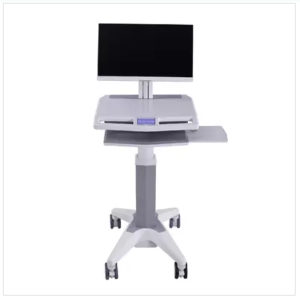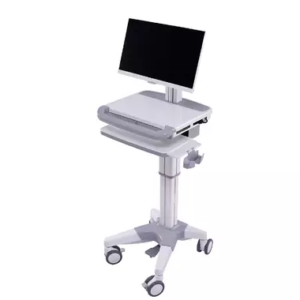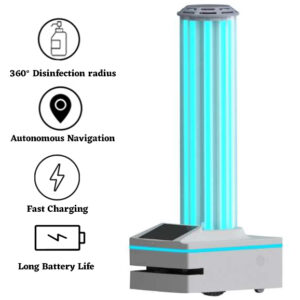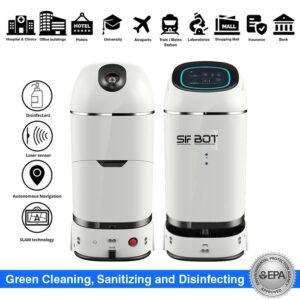Healthcare Robots
[vc_row][vc_column][vc_custom_heading text=”Healthcare Robots
” font_container=”tag:h1|font_size:40px|text_align:center|color:%23444444″ google_fonts=”font_family:Open%20Sans%3A300%2C300italic%2Cregular%2Citalic%2C600%2C600italic%2C700%2C700italic%2C800%2C800italic|font_style:600%20bold%20regular%3A600%3Anormal”][/vc_column][/vc_row][vc_row][vc_column][vc_column_text]
Robots are a rapidly growing part of the modern healthcare landscape. Healthcare Robots relieve medical personnel from monotonous tasks that take a significant proportion of their time; Therefore, freeing them up for more important responsibilities.
Those tasks include food and medication delivery, thereby enhancing and accelerating communication between doctors, hospital staff members, and patients.
Healthcare Robots have highly advanced capabilities for self-navigation throughout the medical facility, transporting dangerous substances, and accessing some contaminated areas in the hospital such as isolation rooms.
Medical professionals use healthcare robots to perform remote check-ups for those restricted to their homes. For example, Novel Coronavirus COVID-19 patients.
Healthcare robots can perform human functions like making depressed or elderly patients feel less lonely.
The human-like language processing and production feature, that healthcare robots have, helps these patients stay positive, remind them to take their medicine and perform simple routine check-ups like temperature, blood pressure, and sugar levels and subsequently send all the data to their caregivers.
[/vc_column_text][/vc_column][/vc_row][vc_row][vc_column][vc_column_text][aws_search_form][/vc_column_text][/vc_column][/vc_row][vc_row css=”.vc_custom_1595934232197{margin-right: 40px !important;margin-left: 40px !important;}”][vc_column]
-
Anesthesiologist
Video-conferencing Telemedicine Cart: SIFTELECART-1.2
$1,050Original price was: $1,050.$899Current price is: $899. Add to cart -
Healthcare Products to Prevent COVID-19
Telemedicine Computer Cart: SIFTELECART-1.0
$1,050Original price was: $1,050.$899Current price is: $899. Add to cart -
Disinfection Robots
Autonomous UVC Disinfection Robot: SIFBOT-6.53
$19,995Original price was: $19,995.$12,695Current price is: $12,695. Add to cart -
Disinfection Robots
Intelligent Mobile Disinfection Robot: SIFBOT-6.6
$28,000Original price was: $28,000.$15,985Current price is: $15,985. Add to cart -
Disinfection Robots
UV Light Disinfection Robot: SIFBOT-6.5
$35,000Original price was: $35,000.$25,985Current price is: $25,985. Add to cart -
Disinfection Robots
Autonomous Disinfection and Humidification Robot: SIFBOT-6.3
$25,000Original price was: $25,000.$18,995Current price is: $18,995. Add to cart -
Disinfection Robots
Disinfection Mobile Healthcare Robot SIFBOT-6.1
$35,000Original price was: $35,000.$26,995Current price is: $26,995. Add to cart







